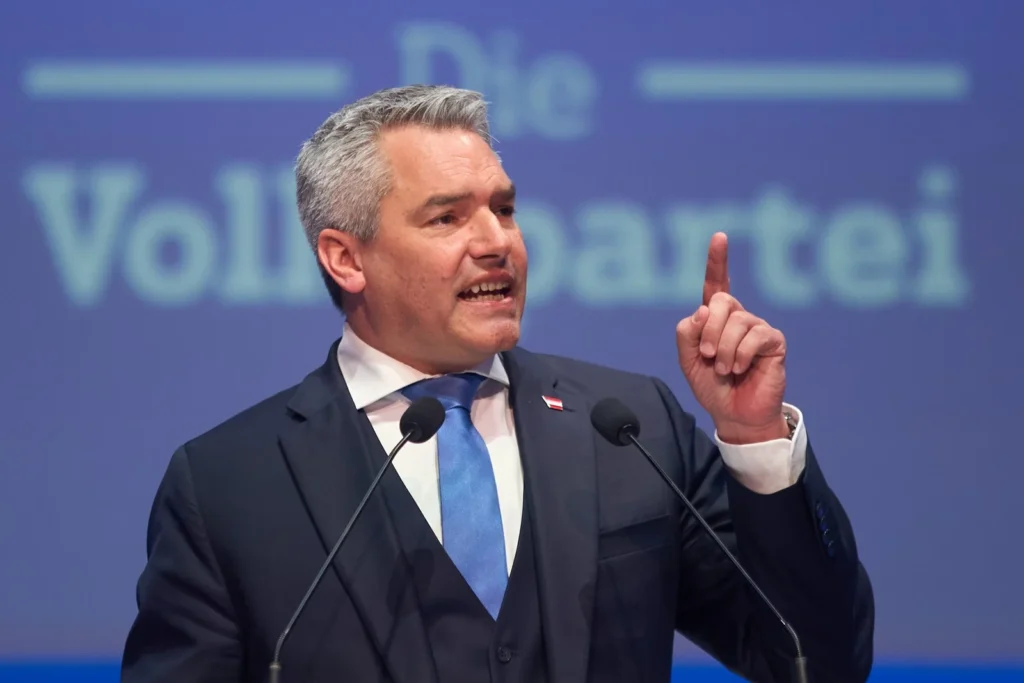Austria’s political scene remains tense as the conservative ÖVP, led by Chancellor Karl Nehammer, struggles to navigate coalition possibilities. While the far-right FPÖ and ÖVP together could secure a majority, significant disagreements and political dynamics complicate the path forward.
Coalition Complications
A faction within the ÖVP supports aligning with the FPÖ, but Nehammer has firmly rejected working with FPÖ leader Herbert Kickl. On the other hand, Kickl insists he would only join a government he leads, creating a political deadlock.
Meanwhile, the only other viable coalition partner, the Greens, are currently in a strained relationship with the ÖVP. Although the Greens are Nehammer’s current coalition partner, tensions make it uncertain whether this partnership can continue.
Snap Elections: A Risk for ÖVP and SPÖ
A snap election remains a possibility but appears unappealing to both the ÖVP and the center-left SPÖ. Recent polls suggest both parties would perform worse than in previous elections, with the FPÖ now leading them by over 10 percentage points.
The FPÖ has capitalized on this political uncertainty. It quickly criticized Nehammer’s coalition discussions, comparing them to Germany’s “traffic-light coalition,” which recently collapsed.
“The FPÖ has been warning for months about this political monstrosity of the loser-traffic-light coalition,” the party declared on X. “People have had enough! It’s time for you to resign, Mr. Nehammer.”
A Nation in Political Limbo
As Austria faces these challenging political dynamics, the prospect of forming a stable government grows increasingly uncertain. With major parties reluctant to pursue a snap election and coalition talks fraught with difficulties, Austria’s political future hangs in the balance.
